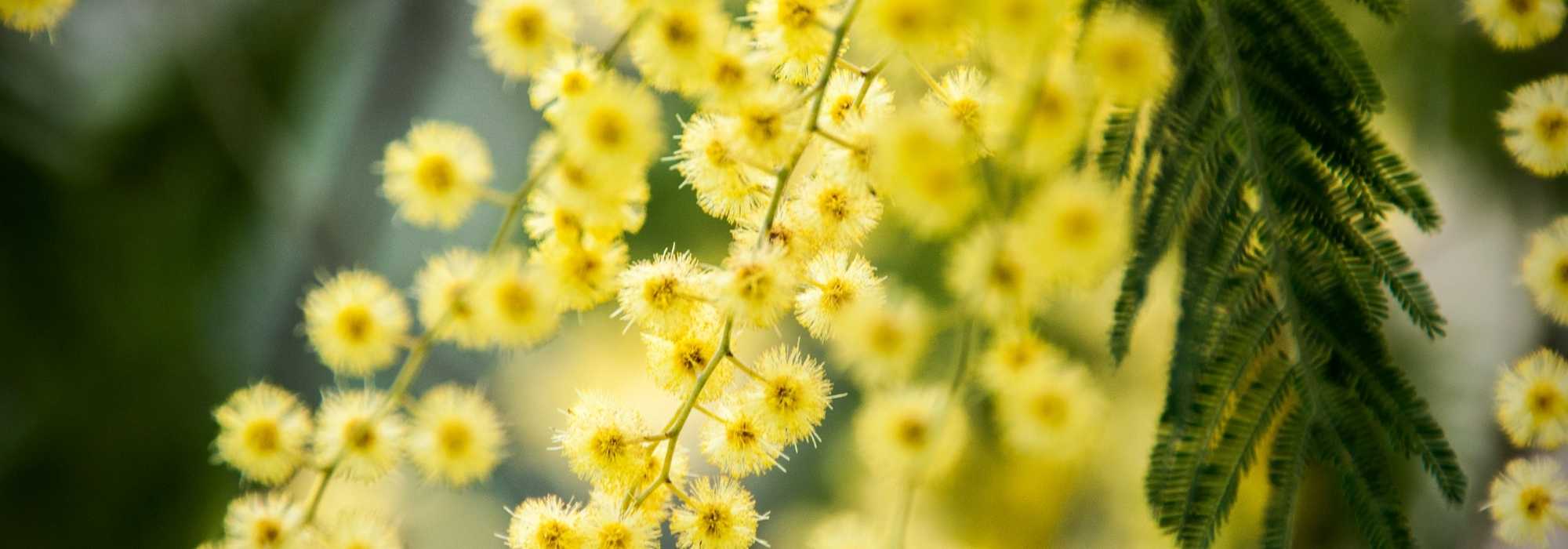
7 trees for a South-facing garden
Our selection of trees suited to the sun
Contents
To create a garden or a part of it that is exposed to the sun, you need to choose plants that can withstand hot and dry conditions. Some thrive in full sun but fear harsh winters, others acclimatise to the north of the Loire as long as they are placed in a warm, sheltered spot, while some enjoy basking in the sun but dread having their roots in water during winter, when the all-terrain plants grow everywhere without a care!
Whether planted alone or grouped in a grove, to create natural or exotic scenes, whether they are deciduous or evergreen, flowering or with colourful foliage, they are drought-tolerant, resistant to heat, and can withstand the fiercest rays of the sun.
Discover our selection of trees for very sunny gardens!
Olive tree
Perfectly suited to the Mediterranean climate, the olive tree requires a sunny spot in a garden bathed in light and sheltered from cold winds and draughts, especially outside its usual growing zone. Relatively tender, it can withstand short frosts of around -10°C to -15°C, in well-drained, even stony, calcareous soil. North of the Loire, it can acclimatise provided it is planted in very well-drained soil and in a very sheltered position. It is particularly sensitive to winter moisture.
It forms a small evergreen tree 2 to 10 m tall, immediately recognisable by its nodose trunk crowned with grey-green foliage, silver on the underside. The very brief white flowering, although nectariferous, occurs for a week at the end of spring. Olives only appear in warm regions and after about ten years of cultivation.
Plant it at the centre of a rockery or on a large bank in full sun alongside undemanding Mediterranean perennial plants such as santolines and lavenders, or with summer-flowering perennials like Dianthus or agapanthus in a mild climate.
⇒ Everything you need to know about the Olive tree.
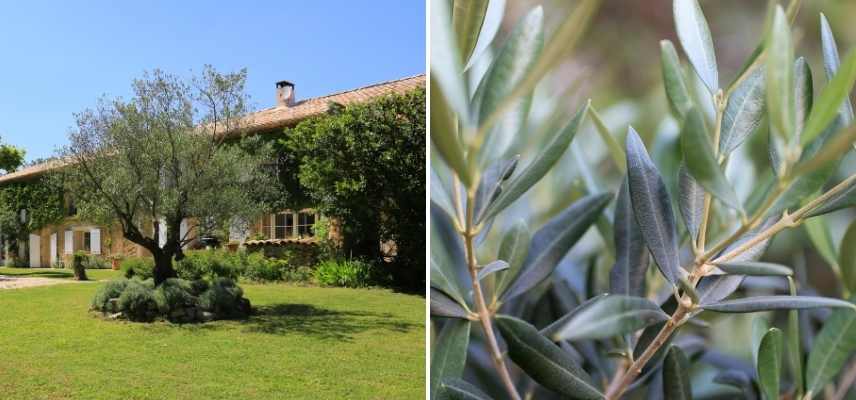
Habit and grey foliage of the olive tree
Read also
10 shade treesAlbizia julibrissin ‘Ombrella’
Another tree for full sun, to be planted in a hot location! This stunning variety of Albizia julibrissin ‘Ombrella’ quickly forms a beautiful bush reaching 5m in height with a remarkable umbrella habit, perfect for providing some shade in the garden. The Albizia is a deciduous tree with elegant, finely divided, light and feathery foliage, reminiscent of wattle. It produces unique, dark pink pompom-like flowers with a silky appearance, hence its nickname “Silk Tree”.
This bush thrives in mild climates and is hardy down to -10°C, provided the cold does not last too long. It will adapt well in the north of the Loire as long as it is given a very sheltered, south-facing position. It will also acclimatise well in a seaside garden. It enjoys full sun and well-drained, sandy soil.
Make sure to leave it enough space to develop its crown freely, without needing to prune it too severely.
It is best planted in isolation in a strategic spot, surrounded by other exotic-style plants such as palms and the pink blooms of Gauras lindheimeri and oleander.
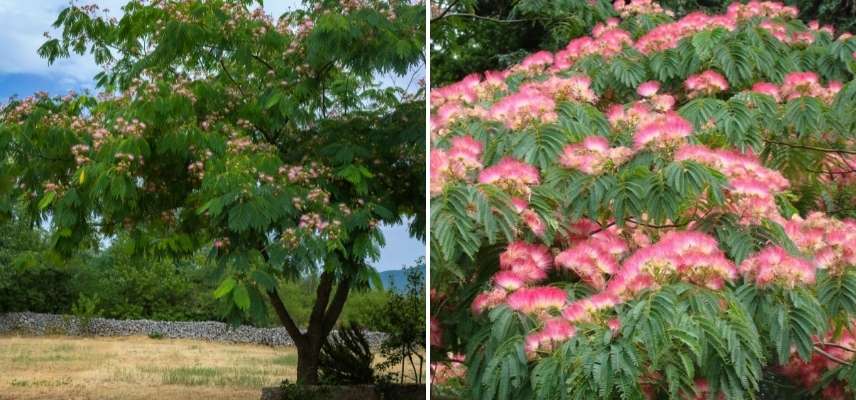
Albizia julibrissin, left showing habit, and right showing foliage and flowering of the cultivar ‘Ombrella’
Discover other Trees and large shrubs
View all →Available in 0 sizes
Available in 1 sizes
Available in 1 sizes
Available in 1 sizes
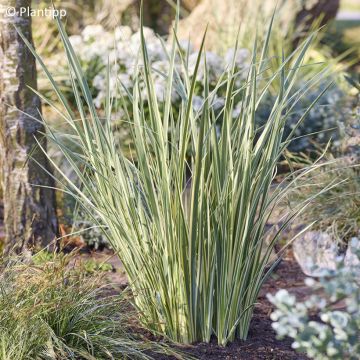
Available in 1 sizes
Available in 1 sizes
Available in 1 sizes
Available in 1 sizes
Available in 2 sizes
Available in 1 sizes
Wattle 'Lisette'
Wattle is the quintessential sun tree! A symbol of the Côte d’Azur, it requires a minimum of 3 hours of sunlight per day to bloom well. ‘Lisette’ is a more floriferous variety than the type. From May to November, this small, highly ornamental tree with a rounded, compact habit, reaching 4 m in all directions, displays its characteristic flowering. On fine, evergreen foliage of rich green, yellow pompom flowers with a distinctive fragrance appear.
This Mediterranean climate shrub, semi-hardy, can withstand frosts of around -6°C at best, and is only cultivated in open ground in our southern regions.
This variety tolerates calcareous soils well and does not produce suckers.
It will make a magnificent specimen when isolated, or in a hedge alongside other tender, exotic-looking shrubs, such as Caesalpinia gilliesii, Abutilon, Escallonias, or Callistemon.
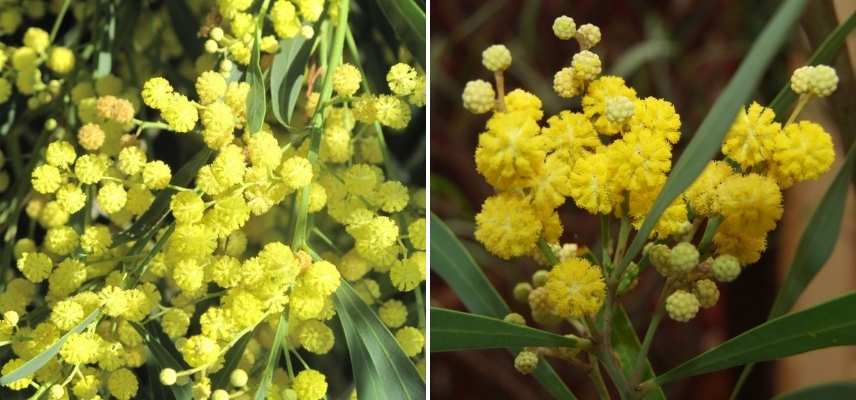
Acacia retinodes ‘Lisette’
Read also
5 fast-growing evergreen treesThe 'Costata' persimmon
The ‘Costata’ Persimmon, like all Chinese Persimmon trees, must be planted in full sun and well sheltered from the wind. Although it is hardy down to -18°C, this fruit tree requires good exposure during the summer to bear fruit. In the north of the Loire, plant it near a south-facing wall to protect it from the wind and to grow it in warmth. It is a very ornamental variety, reaching heights of 6 to 10 m and widths of 5 to 7 m, with its deciduous, broad, ovate leaves turning beautiful red colours in autumn.
From the 3rd or 4th year, from October to December, this self-fertile variety produces beautiful orange fruits without pollination that remain attached to the naked branches for a long time.
It is appreciated both in the orchard and in the ornamental garden. The persimmon can be planted in an orchard, at the back of a vegetable garden, in a free hedge, or near other fruit trees such as the Texas Almond, the William’s Bon Chrétien Pear, or the Goji.
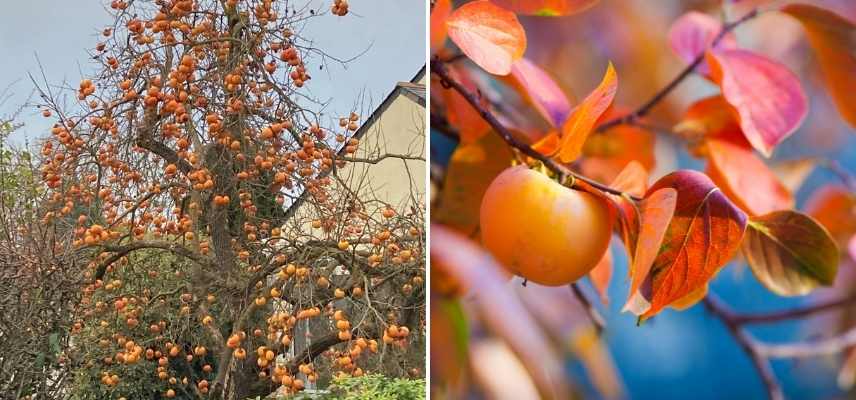
Habit of a persimmon tree on the left, fruit and autumn foliage colouration on the right
Eucalyptus gunnii 'Azura'
Eucalyptus gunnii ‘Azura’ quickly forms a small decorative tree throughout the year, reaching 10 m in height and 2 m in spread at ripeness if left unpruned. If pruned annually, it will measure less than 5 m in height and about 3 m in spread as it will take on width.
This award-winning variety of cider gum, recognised in the Netherlands in 2012, is interesting for three reasons: it stands out for its hardiness (-15°C), moderate size, narrow yet dense habit, and its evergreen foliage in winter, which is a remarkable blue-grey.
Easy to cultivate, it requires only full sun to thrive and adapts to all well-drained soils that are not too calcareous.
It adds a touch of exoticism to the garden when planted in a hedge or to create a large windbreak curtain with other bushes, such as Elaeagnus, or alongside drought-tolerant shrubs like cistus and Callistemons.
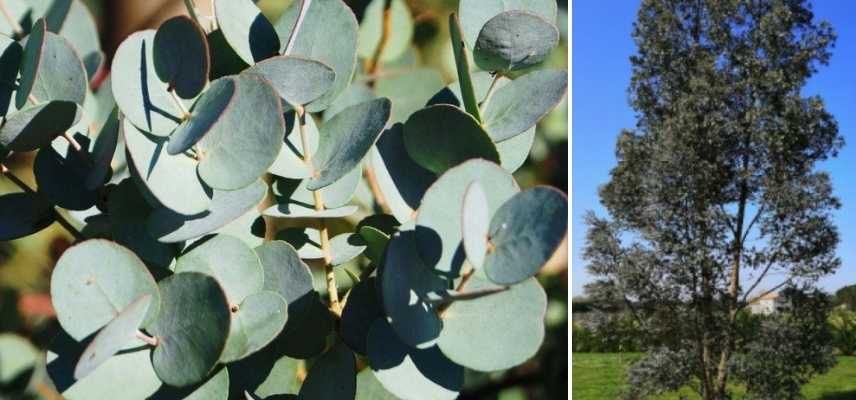
Eucalyptus gunnii ‘Azura’: foliage and habit
The ‘Alphen's Globe’ plane tree
Platanus (x) acerifolia ‘Alphen’s Globe’ is a Dutch selection that has a more modest size than its venerable ancestor and a beautiful globe-shaped crown. Easier to fit into our gardens than its elder, the cultivar ‘Alphen’s Globe’ will form a small deciduous tree of 8 to 10m in height and 6m in spread, depending on the height of the grafting point.
This dwarf version of the Plane tree bears large, glossy green palmate leaves similar to those of maples, which turn yellow and then brown in autumn before falling. Its bark is also decorative as it exfoliates in large plates, revealing areas of light colour.
In May, the tree is covered with discreet green flowering that produces curious green pom-pom-like fruits that persist on the branches long after the leaves have fallen.
Perfectly tolerant of all types of sufficiently deep soils, frost down to -15°C, and hot, dry summers once established, it must be planted in full sun.
It thrives throughout France, and you can plant it in isolation to highlight its silhouette, or to shade a terrace, surrounded by a boxwood border, for example.
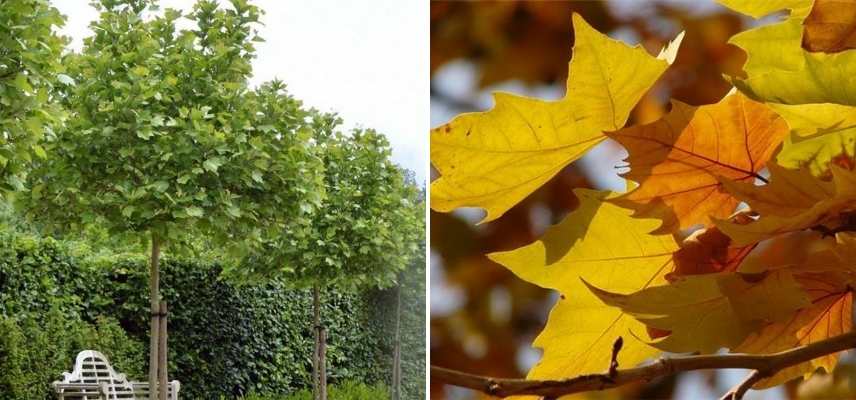
Platanus acerifolia ‘Alphen’s Globe’, habit and autumn foliage
The cork oak
Timeless, the Quercus suber, commonly known as the cork oak, is a magnificent evergreen tree that loves the sun! Like the holm oak, it is particularly suited to gardens in the south of France and is emblematic of Mediterranean forests and scrub vegetation. It moderately quickly forms a tree of 11 to 12 m in all directions, with a picturesque stout silhouette. Its trunk reveals a thick, spongy bark, cork, topped by a sparse, rounded, spreading crown.
The small evergreen leaves are spiky and glossy, dark green with a slightly glaucous hue. After pollination, the flowers transform into elongated green acorns that turn brick red at ripeness.
Less accommodating than its cousin the holm oak, the Quercus suber requires acidic soil to thrive. Only plant it in your garden if your soil and climate allow (hardy down to -10°C, non-calcareous, light, sandy, very well-drained soil), as it can then live for over 300 years!
Plant it as a solitary specimen or in a grove, surrounded by lavenders, cistus, or strawberry trees.
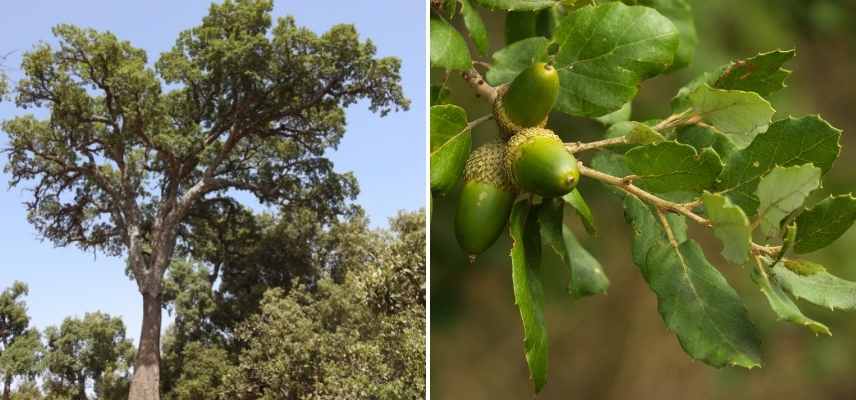
Quercus suber: habit, foliage, and fruits
Further reading
- Also discover our selection of 7 bushes for a South-facing garden
- Subscribe!
- Contents

































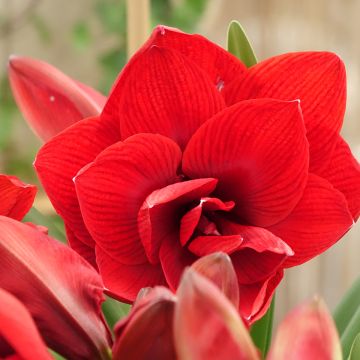


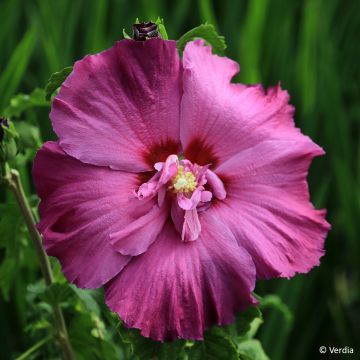

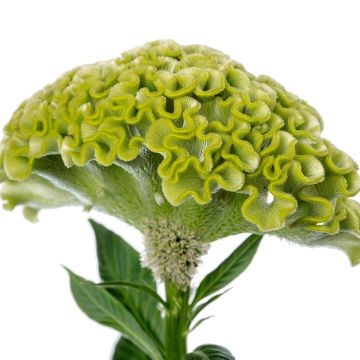
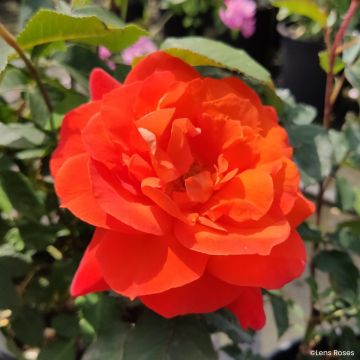

Comments